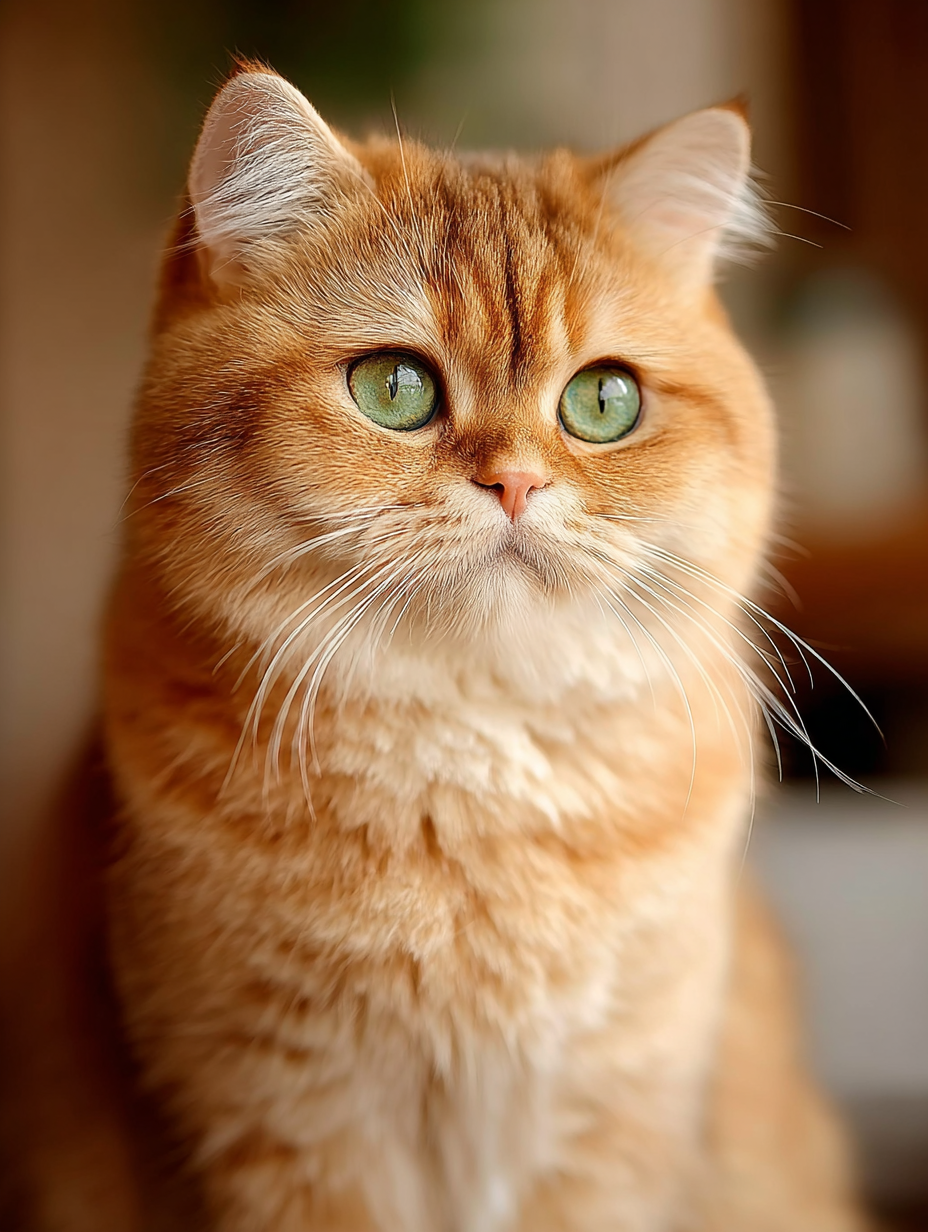
Orange British Shorthair: Color, Genetics and Kitten Price
The orange British Shorthair is one of the most recognized warm colors in the breed.
Often registered as red British Shorthair, this cat shows a strong, even coat with deep copper tone and copper or gold eyes.
It is genetically different from blue or lilac cats, produced through the O (orange) gene, which turns black pigment into red.
This guide explains how the orange color develops, how to identify true orange vs cream, and what to expect from orange British Shorthair kittens in appearance, cost, and temperament.
👉 See our Kitten Application — all of our kittens are registered, health tested, and raised in-home.
British Shorthair Orange Cat Overview
| Trait | Description |
|---|---|
| Breed | British Shorthair |
| Color Name | Orange / Red / Ginger |
| Genetic Code | O gene (phaeomelanin pigment) |
| Eye Color | Copper, Gold, Amber |
| Pattern | Usually tabby or ghost-striped |
| Coat Type | Short, dense, double-layered |
| Average Weight | 8–17 lbs |
| Lifespan | 12–18 years |
| Temperament | Calm, affectionate, confident |
| Recognition | CFA, TICA, GCCF |
The British Shorthair orange cat is part of the breed’s solid color division but may appear slightly patterned due to pigment density.
Its color is standardized across major registries under the name Red British Shorthair.
British Shorthair Orange Cat Genetics
The orange British Shorthair’s coat results from the O gene, which replaces black pigment with phaeomelanin, producing red pigment in the hair shaft.
This color gene is sex-linked, found on the X chromosome.
- Males (XY): only one copy is needed to appear orange.
- Females (XX): must inherit two orange genes to be fully orange.
If a female inherits one orange and one non-orange gene, she becomes a tortoiseshell British Shorthair — orange and black mixed.
British Shorthair Orange Cat vs Red British Shorthair
The orange British Shorthair and red British Shorthair are genetically identical.
“Orange” and “red” are used interchangeably; ginger is a common informal term.
Registries such as CFA and TICA use “Red,” while European breeders often say “Orange British Shorthair.”
Both refer to the same coat produced by the orange gene.
Coat and Appearance
The coat of the orange British Shorthair is short, thick, and plush.
Each hair is fully pigmented from root to tip.
This line’s coat stands upright due to dense undercoat structure, a key British Shorthair trait.
Most orange British Shorthairs display tabby markings — visible striping or ghost patterns on the body and tail.
True “solid red” is rare, as the gene enhances visible pigment contrast.
Eye Color in Orange British Shorthairs
Orange British Shorthairs have copper, gold, or deep amber eyes.
These warm tones align with the red pigment and are preferred in show standards.
Kittens are born with blue eyes that shift to gold between 6–12 months.
Green eyes are not seen in orange lines — they are linked to silver and golden color groups.
Male vs Female Orange British Shorthairs
- Male orange British Shorthairs are more common due to single-gene expression.
- Female orange British Shorthairs require two orange genes, making them rarer.
- Female tortoiseshells appear when only one X chromosome carries orange, creating a mix of black and red pigment.
These genetics make orange females valuable for breeding programs aiming to maintain red or cream lines.
British Shorthair Cream Cat vs Orange Cat
The cream British Shorthair is the diluted form of the orange coat.
The dilution gene (d) reduces pigment intensity, turning orange into pale cream or ivory.
| Feature | Orange (Red) | Cream (Dilute Red) |
|---|---|---|
| Pigment | Full phaeomelanin | Diluted phaeomelanin |
| Tone | Copper or flame red | Light cream or peach |
| Eye Color | Copper, gold | Copper, gold |
| Pattern | Often tabby | Often tabby |
| Genetic Base | O | O + d |
Cream British Shorthairs are often bred with blue or lilac lines to create blue-cream and lilac-cream kittens.
👉 Learn more: British Shorthair Cat Colors
Temperament and Personality
All British Shorthairs are calm, confident, and easy to manage.
Orange and red lines tend to be slightly more active and outgoing, especially in kitten stages.
Adult orange British Shorthairs are independent but loyal to their owners, with predictable routines and low vocalization.
They adapt well to children, dogs, and family life.
Orange British Shorthair Kittens
Orange British Shorthair kittens are born lighter, usually apricot or peach.
As the coat matures, pigment strengthens into rich copper-red around 10–12 months.
Kittens show faint tabby striping early, which may fade or remain as “ghost markings.”
Breeders should provide:
- CFA or TICA registration
- Health testing (PKD, FeLV/FIV)
- Clear coat and eye development records
At Almonte Cats, all orange kittens are hand-raised, early socialized, and fed premium nutrition to ensure balanced growth and confidence. View our latest litter of Golden British shorthair kittens here.
Price and Rarity
Orange British Shorthairs are moderately rare.
They are more available than golden or lilac but less common than blue.
Typical U.S. price range: $3,000–$4,500 per kitten depending on lineage, gender, and coat density.
Female solids and imported bloodlines fall on the higher end of the scale. See How Much is a British Shorthair Cat for more price details.
Grooming and Coat Care
Orange British Shorthairs require minimal grooming due to the breed’s short, even fur.
Weekly brushing removes loose hair and maintains coat texture.
During seasonal shedding, additional brushing prevents buildup.
Bathing is rarely needed and can strip natural oils, reducing coat shine.
Health and Longevity
Orange British Shorthairs share the breed’s overall strong health profile.
Average lifespan is 12–18 years.
Recommended health screenings include:
- PKD (Polycystic Kidney Disease) DNA test
- Cardiac ultrasound for HCM
- Annual dental and weight checks
Balanced nutrition and moderate exercise prevent weight gain, a common concern for the breed’s heavy frame.
Orange British Shorthair Personality Overview
| Trait | Description |
|---|---|
| Temperament | Calm, social, patient |
| Energy Level | Moderate |
| Affection | Steady and loyal |
| Intelligence | High |
| Vocalization | Low |
| Adaptability | Excellent |
| Compatibility | Ideal for families and indoor homes |
Orange British Shorthair Personality: Are They More Affectionate?
Many future cat owners wonder if orange British Shorthair kittens are friendlier, cuddlier, or more social than other colors. It’s a fair question — photos of these plush, copper-toned cats give the impression of warm personalities to match their coats.
But do orange British Shorthairs actually behave differently? Or is it simply the color that gives that impression?
Let’s look at what real British Shorthair owners say, how color relates (or doesn’t) to personality, and what to expect from a male British Shorthair kitten before you bring one home.
Do Orange British Shorthair Cats Have a Cuddlier Personality?
Color doesn’t determine personality. While orange cats in general — across all breeds — have a reputation for being more affectionate, scientific studies haven’t proven that coat color influences behavior.
In the British Shorthair breed, temperament is driven by genetics, socialization, and breeder handling — not pigment.
That said, many owners report their orange British Shorthairs tend to be laid-back and gentle. They often enjoy being close to their people, even if they’re not true lap cats.
Owners describe them as cats that:
- Follow you from room to room
- Enjoy sleeping near you, not necessarily on you
- Purr easily and bond deeply once they trust you
- Tolerate handling better than some other lines if well-socialized
So while orange doesn’t automatically mean “cuddly,” many families find their red or ginger British Shorthairs to be affectionate in quiet, steady ways.
Male vs Female British Shorthair Temperament
British Shorthairs in general are known for being calm, balanced, and independent. However, there are a few subtle gender differences that owners notice:
- Male British Shorthairs are often described as slightly more social and people-oriented. They may follow you more, nap beside you, or roll over for belly rubs.
- Females are typically more reserved and self-contained. They form deep bonds but on their own terms.
In one Reddit discussion among BSH owners, many noted that while their male cats weren’t lap cats, they loved being nearby — “my lap is hot lava, but he sits next to me every night.”
Others shared that early handling made a huge difference: kittens raised in-home, touched daily, and positively introduced to being held were more open to affection later in life.
👉 Tip: When choosing a kitten, ask your breeder how each kitten behaves during handling. Personality can vary litter to litter, but a confident, curious kitten usually grows into an easygoing adult.
Do British Shorthairs Like to Be Picked Up or Sit on Laps?
This is one of the most common questions about the breed — and the answer is: sometimes, but not always.
British Shorthairs are affectionate, but they prefer closeness on their terms.
Most are more comfortable sitting next to you rather than directly on your lap. Their dense body type also makes long lap sessions less comfortable for them.
However, many owners report exceptions:
- Some orange or cream males happily nap beside their owners on the couch.
- A few even enjoy sleeping between your legs or curling near your chest at night.
- Rarely, a truly relaxed British Shorthair will tolerate being picked up and cradled like a baby.
These behaviors depend more on socialization, trust, and routine than on color or gender.
Owner Experiences: Orange & Male British Shorthairs
British Shorthair owners share consistent feedback:
“My orange boy isn’t a lap cat, but he sleeps near my pillow every night.”
“My cream male follows me everywhere. He’s affectionate, but never clingy.”
“My orange and white BSH loves cuddles — but only when she chooses.”
It’s clear from owner reports that affection in British Shorthairs is situational, not absent.
They express love by staying close, watching from a distance, or gently tapping you for attention.
And once you learn to respect those boundaries, they become incredibly loyal companions who thrive on quiet presence rather than constant handling.
How to Raise a More Affectionate British Shorthair Kitten
If you’ve reserved an orange male British Shorthair kitten and hope for a snuggly companion, your daily routine after adoption will shape his personality more than his coat color ever could.
Follow these simple strategies:
- Handle daily, but gently. Pick him up for short moments, always ending positively.
- Respect boundaries. Never force cuddles — let him come to you.
- Reward closeness. When he sits beside you or lies on your lap, praise and pet calmly.
- Encourage trust early. Include grooming, brushing, and nail trims as positive bonding time.
Cats that associate handling with calm, safe experiences are far more likely to become lap companions later.
So, Are Orange British Shorthairs More Cuddly?
In short — not because of color, but because of confidence.
A confident kitten raised in a home environment tends to be affectionate whether he’s blue, orange, cream, or golden.
Orange British Shorthairs may appear cuddlier simply because their bright, warm color and relaxed expression make them seem that way — but the real key is temperament, early socialization, and trust.
Final Advice for New Owners
If you’re choosing between kittens, focus less on color and more on behavioral cues:
- Which kitten looks at you calmly instead of hiding?
- Which one leans into your touch instead of pulling away?
- Which one plays with confidence and curiosity?
Those traits will matter long after coat color stops being the novelty.
Choose for temperament first — color second — and you’ll enjoy the quiet loyalty that makes this breed famous.
Frequently Asked Questions About the Orange British Shorthair Cat
1. What is an Orange British Shorthair cat?
An orange British Shorthair is a purebred British cat that carries the O gene, which turns black pigment into red pigment called phaeomelanin. As a result, the coat develops a bright copper or ginger tone, sometimes described as red. While most cats show a faint tabby pattern, the overall look remains rich and even. This color belongs to the solid color division in all major cat registries.
2. Is the Red British Shorthair the same as the Orange British Shorthair?
Yes. The red British Shorthair and the orange British Shorthair are genetically the same. Registries such as CFA and TICA use the word Red, while many European breeders and pet owners say Orange or Ginger. Although the terms differ by region, they all describe the same color expression created by the O (orange) gene.
3. Are Orange British Shorthairs rare?
Orange British Shorthairs are moderately rare compared to blue or cream cats. Males are more common since they only need one orange gene, while females must inherit two. Because of this, solid orange females are quite limited in breeding programs. Their balanced rarity and strong pigment make them highly desirable to collectors and families alike.
4. Can female British Shorthairs be orange?
Yes, but the genetics are more complex. Females must receive one orange gene from each parent to be fully orange. If only one gene is present, the cat becomes a tortoiseshell, displaying both orange and black patches. This is why true orange females are much rarer and often used in planned breeding pairings.
5. What eye color do Orange British Shorthairs have?
Most orange British Shorthair cats have deep copper, gold, or amber eyes. These shades develop as melanin fills the iris, matching the coat’s warm tone. Kittens are born with blue eyes that gradually darken through gold to copper as they mature. Unlike silver or golden lines, orange cats never develop green or blue eyes. See green eyes in British shorthair cats here.
6. Do Orange British Shorthairs always have stripes?
Almost always, yes. The orange gene makes the tabby pattern visible even in cats registered as solid red. Light “ghost stripes” or faint rings may appear on the legs, tail, or face. These markings soften with age but rarely disappear completely, giving the cat subtle depth and contrast.
7. What causes the orange color in British Shorthairs?
The color is caused by the O gene, located on the X chromosome. This gene replaces black pigment with red pigment, resulting in the copper-orange coat. Since males have one X chromosome, they need only one copy to appear orange, while females need two. This gene also forms the base for other colors like cream, tortoiseshell, and red tabby.
8. What is the difference between Orange and Cream British Shorthairs?
The cream British Shorthair is simply the diluted form of orange. The dilution gene (d) lightens pigment, producing a soft ivory or peach color instead of copper-red. Both colors carry the same orange gene, but differ in intensity and tone. Creams are often bred with blue or lilac cats to create attractive pastel combinations.
9. Are Orange British Shorthairs part of the solid color group?
Yes. Despite faint tabby markings, orange (or red) British Shorthairs are registered under the solid color group. This classification includes blue, black, lilac, and cream. The term “solid” refers to overall uniform color coverage, not the total absence of striping. See the Introduction to all British shorthair colors here.
10. Do Orange British Shorthair kittens change color as they grow?
Yes, slightly. Kittens start out a lighter peach or apricot color, and the coat deepens over the first year. By around twelve months, the full adult tone appears, typically richer and denser. Seasonal shedding can also cause slight tone variations throughout the year.
11. At what age do Orange British Shorthairs reach their full color?
Most reach their final shade between ten and twelve months of age. During this time, coat density and pigment fully develop. The color may darken or even out after the first major molt. Eye color also deepens to copper or gold during this same growth stage.
12. What color eyes do Orange British Shorthair kittens have at birth?
All British Shorthair kittens are born with blue eyes. As melanin increases, the eyes turn hazel, then gold, and finally copper or amber. The transition typically completes between eight and twelve months. The final color depends on the coat’s genetic line and pigment strength. See British shorthair with green eyes here.
13. Are Orange British Shorthairs affectionate cats?
Yes. They are friendly, calm, and loyal, with personalities typical of the British Shorthair breed. Many owners describe them as quietly affectionate—they enjoy company but dislike being overhandled. They adapt easily to both families and single-person households, showing steady attachment and calm energy.
14. Are Orange British Shorthairs playful?
They are playful but measured. Orange British Shorthair kittens enjoy chasing toys and social interaction, but adult cats slow down with age. They prefer short, regular play sessions followed by rest. Their activity level makes them easy to manage indoors.
15. How big do Orange British Shorthairs get?
Adult males average 12–17 pounds, while females weigh between 8 and 13 pounds. Their body type is compact, broad, and muscular with short legs. The heavy bone structure makes them appear solid even at average weight. This same size standard applies across all colors in the breed.
16. How long do Orange British Shorthairs live?
With proper care, they live 12 to 18 years on average. Balanced nutrition and regular veterinary exams play an important role in longevity. Because this breed matures slowly, it maintains vitality well into middle age. Regular health screenings are recommended to support long-term wellness.
17. What health issues can Orange British Shorthairs have?
Most British Shorthairs are healthy, but breeders screen for PKD (Polycystic Kidney Disease) and HCM (Hypertrophic Cardiomyopathy). Weight management is also important because their thick build hides body changes easily. Routine dental care helps maintain oral health and prevent secondary issues. Responsible breeding practices help minimize inherited risks.
18. Do Orange British Shorthairs require a lot of grooming?
Not much, but consistency helps. A weekly brushing removes loose fur and maintains the dense coat. During shedding seasons, more frequent brushing keeps the undercoat clean. Bathing is rarely needed and can remove natural coat oils, so it’s best avoided unless necessary.
19. Do Orange British Shorthairs shed a lot?
They shed moderately throughout the year and more heavily in spring and fall. Regular brushing keeps the coat healthy and reduces shedding. A diet rich in omega-3 fatty acids supports coat strength and reduces dander. Even during heavy shedding, their short fur is easy to maintain compared to longhaired breeds.
20. What is the temperament of an Orange British Shorthair?
The orange British Shorthair is calm, balanced, and intelligent. These cats prefer predictable routines and gentle interaction. They rarely show aggression, even under stress, which makes them good family pets. Their patient nature is consistent with the entire British Shorthair breed.
21. How much does an Orange British Shorthair kitten cost?
In the U.S., prices range from $3,000 to $4,500 for pet-quality kittens. Show-quality or imported lines can reach $5,000 or more. Price depends on pedigree, gender, and coat intensity. Always buy from a registered breeder who provides health testing and documentation.
22. Where can I find Orange British Shorthair kittens for sale?
Look for breeders registered with CFA or TICA who specialize in color-specific lines. Responsible breeders provide medical records and pedigree papers for both parents. Avoid unverified online sellers or kitten mills. See our new British Shorthair Kittens here.
23. Are Orange British Shorthairs good with children?
Yes, they are steady and gentle with children. They handle supervised play well and rarely react negatively to noise or movement. Their tolerance makes them ideal for families seeking a calm, reliable companion. Early socialization ensures confidence in multi-pet homes.
24. Do Orange British Shorthairs make good indoor cats?
Yes. They are naturally suited for indoor life due to their calm energy and stable temperament. They enjoy windows, soft resting spots, and quiet spaces. Indoor living also protects their coat and helps prevent weight fluctuations.
25. Can two Orange British Shorthairs produce kittens of other colors?
Yes, depending on carrier status. If both parents carry the dilution gene, cream kittens may appear. If non-orange genes are present, tortoiseshell females or patterned kittens can occur. Breeders use color charts and DNA testing to predict outcomes accurately.
26. What’s the difference between an Orange British Shorthair and a Golden British Shorthair?
The orange British Shorthair carries the O gene, while the golden British Shorthair carries the Wb (wide-band) gene. Golden cats have lighter shaded coats and green eyes, while orange cats have solid red coats and copper eyes. Both are warm-toned but genetically distinct. Their eye color difference is the easiest way to tell them apart.
27. Can Orange British Shorthairs be bi-color?
Yes. The white spotting gene (S) can produce bi-color orange cats with white areas on the face, chest, or legs. These cats remain within breed standards as long as the color distribution is balanced. Bi-color patterns are common in cream and orange combinations. Registries accept them under the bi-color or particolor class.
28. Are Orange British Shorthairs born with visible stripes?
Yes. Every orange or red kitten shows clear tabby markings at birth. As the fur thickens, the contrast fades but remains faintly visible. The pattern may appear stronger in sunlight or on shorter summer coats. Complete solid color without patterning is extremely rare.
29. Do Orange British Shorthairs and Cream British Shorthairs have different eye colors?
Yes, slightly. Orange cats usually have deeper copper eyes, while cream cats lean toward lighter amber or gold. The difference comes from pigment concentration in the iris. Both shades fall within acceptable breed standards.
30. Why are Orange British Shorthairs so popular?
They’re popular because they combine color strength with the classic British Shorthair temperament. The red line produces kittens that are visually striking yet easy to manage. Their color stands out in photos, show rings, and pet households alike. Overall, they represent one of the most balanced and recognizable color groups in the breed.
British Shorthair Color Comparison: Orange vs Cream vs Golden vs Lilac
| Trait | Orange British Shorthair (Red) | Cream British Shorthair | Golden British Shorthair | Lilac British Shorthair |
|---|---|---|---|---|
| Genetic Base | O (orange/red pigment) | O + d (diluted red pigment) | Wb (wide-band) + A (agouti) | b (chocolate) + d (dilution) |
| Main Gene Interaction | Red pigment replaces black | Dilution lightens red pigment | Wide-band lightens each hair shaft | Chocolate pigment diluted to soft gray |
| Coat Description | Deep copper or red, often faintly striped | Light peach or ivory with smooth tone | Honey-gold or warm shaded undercoat | Soft pink-gray with frosted texture |
| Eye Color | Copper, Gold, Amber | Gold, Copper | Green, Aqua | Copper, Orange |
| Typical Pattern | Tabby or Ghost Markings | Tabby or Bi-color | Shaded or Tipped | Solid |
| Gender Expression | Common in males, rare in females | Equal male/female expression | Equal male/female expression | Equal male/female expression |
| Rarity Level | Moderate | Moderate | Rare | Rare |
| Average Kitten Price (USD) | $3,000–$4,500 | $3,000–$4,200 | $4,500–$6,500 | $4,000–$5,000 |
| Registry Term | Red British Shorthair | Cream British Shorthair | Golden Shaded British Shorthair | Lilac British Shorthair |
| Eye Color Variation with Age | From blue to deep copper by 12 months | From blue to gold or copper | From blue to green or aqua | From blue to orange or gold |
| Temperament Tendency | Confident, calm, social | Gentle, reserved, affectionate | Intelligent, alert, steady | Quiet, loyal, people-oriented |
| Common in Breeding Programs | Yes, used to maintain red and cream lines | Yes, paired with blue lines | Yes, used for shaded and tipped lines | Limited, used for color diversity |
| Best Known For | Classic warm tone and copper eyes | Pastel variation of red tone | Rare luminous coat and green eyes | Soft muted color with British texture |
Why You Shouldn’t Choose a British Shorthair Only for Its Color
It’s easy to be drawn to a cat’s color — especially the bright orange coat or rare golden shading of a British Shorthair — but appearance should never be the only factor when choosing a companion.
Every British Shorthair, regardless of coat color, shares the same foundation: a calm temperament, steady confidence, and a strong bond with its household.
When selecting a kitten, focus first on temperament, health, and breeder ethics.
Ask how the kittens are raised, what health testing the parents have completed, and how the breeder socializes them during their first weeks.
A well-socialized kitten from health-tested lines will adapt more easily and live a longer, healthier life than one chosen purely for appearance.
Color can be the finishing touch, but temperament determines long-term compatibility.
A calm, people-centered British Shorthair — blue, orange, cream, or golden — will fit more naturally into your routine, your home, and your lifestyle.
When chosen for the right reasons, the bond you build will outlast trends, coat shades, or genetic rarity.
👉 Apply for a British Shorthair Kitten from Almonte Cats Our kittens are raised for health, structure, and temperament first, so your cat’s color becomes just one part of a lifelong match.
✅ Related Reading:
- Apply for a British Shorthair Kitten at Almonte Cats
- British Shorthair Cream Cat
- British Shorthair Golden Cat
- British Shorthair Colors Guide
- British Shorthair Green Eyes
Final Summary
The orange British Shorthair is a key color in the breed’s warm color group.
It combines strong pigmentation, copper eyes, and stable temperament with the dense coat that defines the British standard.
Whether labeled red, ginger, or orange, it remains one of the most recognizable and desirable variations worldwide.
👉 View Available Orange British Shorthair Kittens — all kittens CFA/TICA registered, health tested, and raised for temperament and structure.
About the Author
Written by Almonte Cats
Almonte Cats is a CFA and TICA registered British Shorthair cattery based in the United States.
We specialize in classic and color-focused lines — orange (red), cream, golden, and lilac British Shorthairs — bred for health, temperament, and correct British type.
Every kitten is raised in-home, vet-checked, and health tested before placement.
Our program prioritizes structure, socialization, and long-term health above coat color, ensuring every family receives a confident, well-adjusted companion.
📧 Contact: Apply for a British Shorthair Kitten
🌐 Website: AlmonteCats.com
Sources and References
- Cat Fanciers’ Association (CFA) – British Shorthair Breed Standard
https://cfa.org/british-shorthair/ - The International Cat Association (TICA) – British Shorthair Breed Profile
https://tica.org/breed/british-shorthair/ - GCCF – British Shorthair Color and Pattern Classification
https://www.gccfcats.org/getting-a-cat/breeds/british-shorthair/ - Royal Canin – British Shorthair Breed Information
https://www.royalcanin.com/us/cats/breeds/british-shorthair - iCatCare – Understanding Cat Colours, Patterns and Eye Colours
https://icatcare.org/advice/understanding-cat-colours-patterns-and-eye-colours/ - PetMD – Cat Coat Color Genetics and Pigment Expression
https://www.petmd.com/cat/general-health/cat-color-genetics - PawPeds Database – British Shorthair Pedigrees and Lineage
https://pawpeds.com/db/?p=bri - Catster – British Shorthair vs Russian Blue Comparison
https://www.catster.com/cat-breeds/british-shorthair-vs-russian-blue-cat/ - A-Z Animals – British Shorthair Breed Overview and Color Traits
https://a-z-animals.com/pets/cats/cat-comparison/british-shorthair/ - TICA Genetics Committee – Color Inheritance in Cats
https://tica.org/phocadownload/genetics.pdf
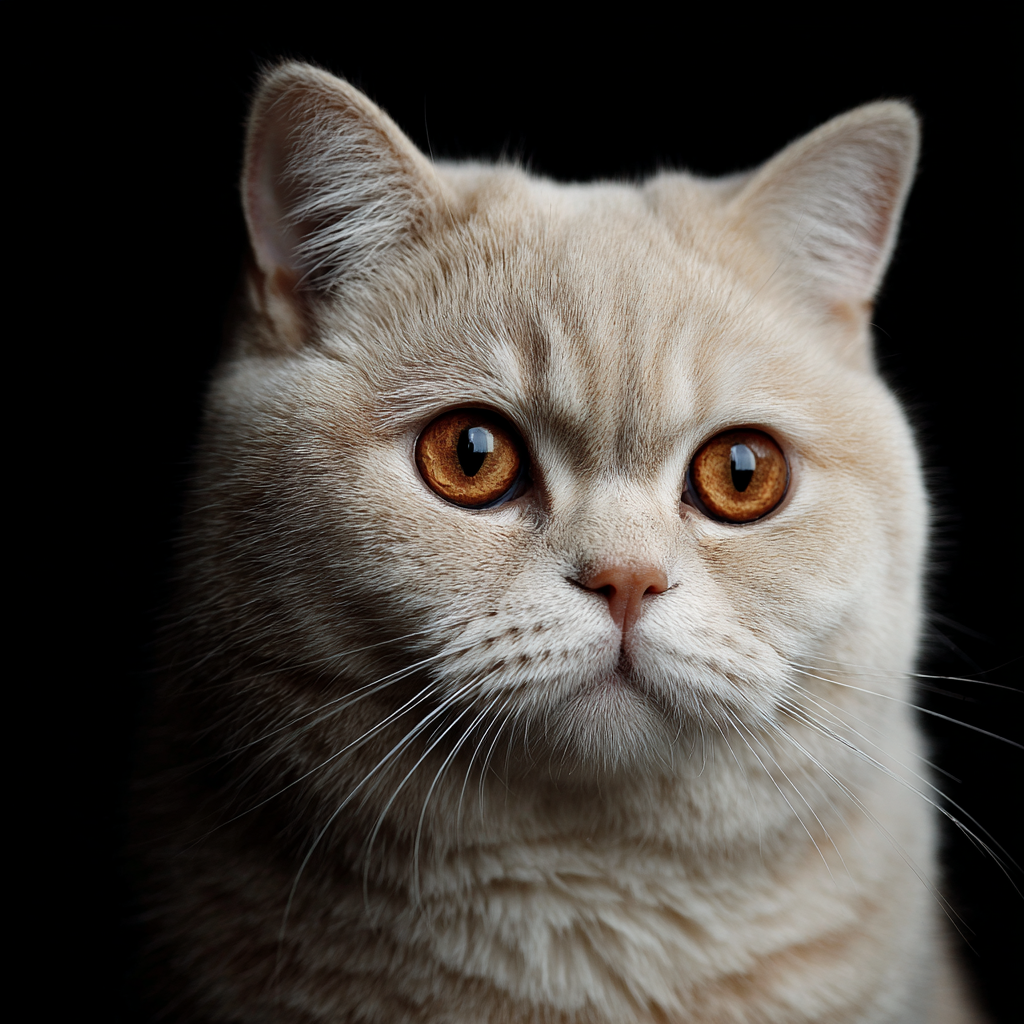
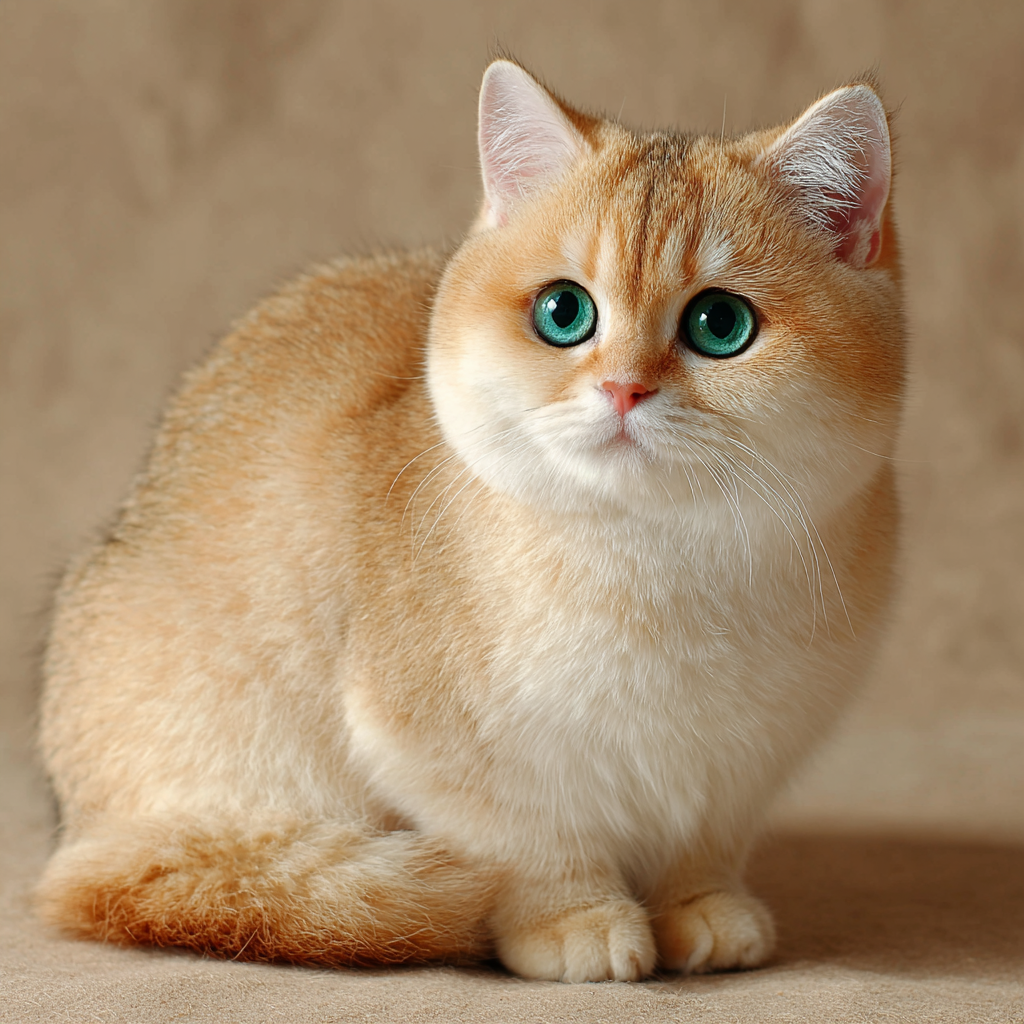
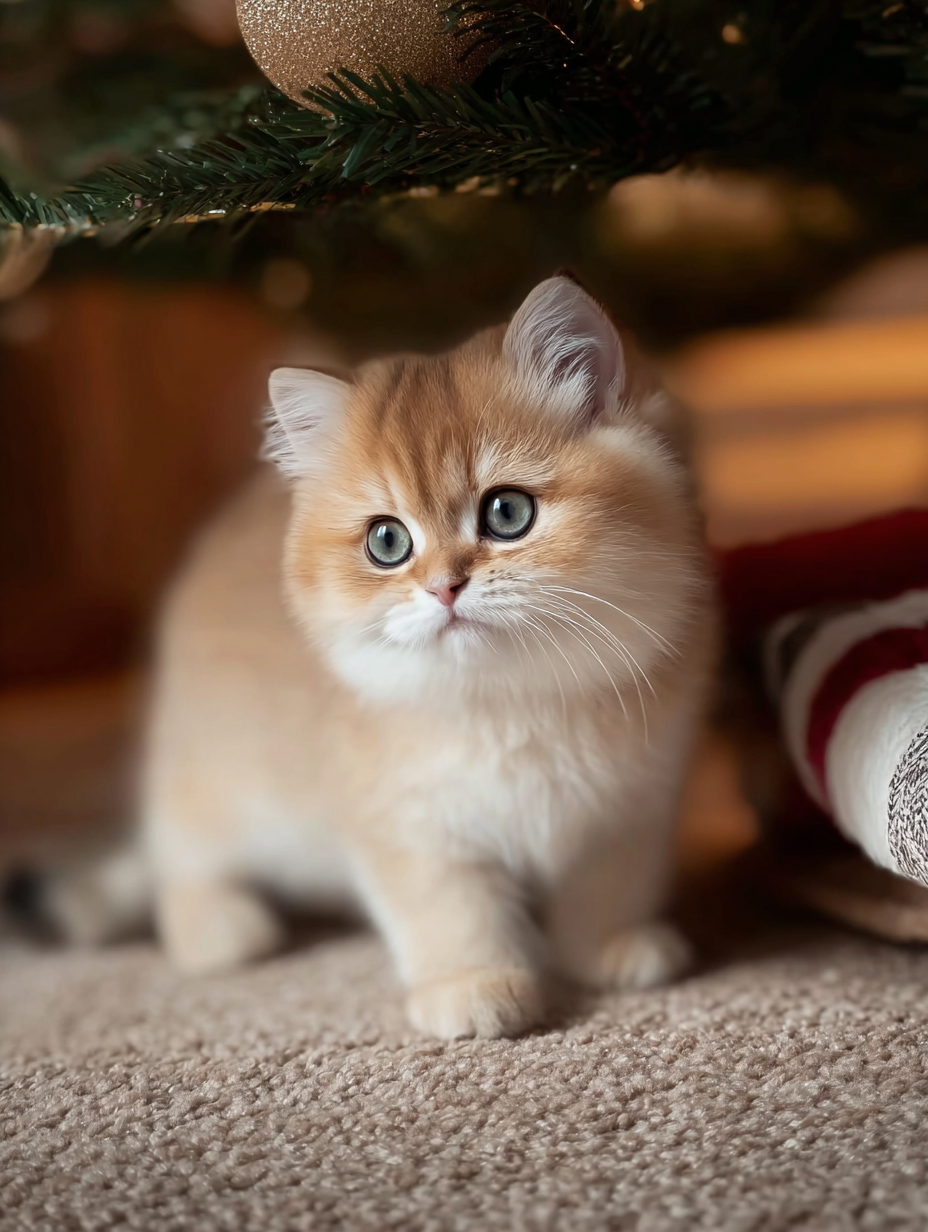
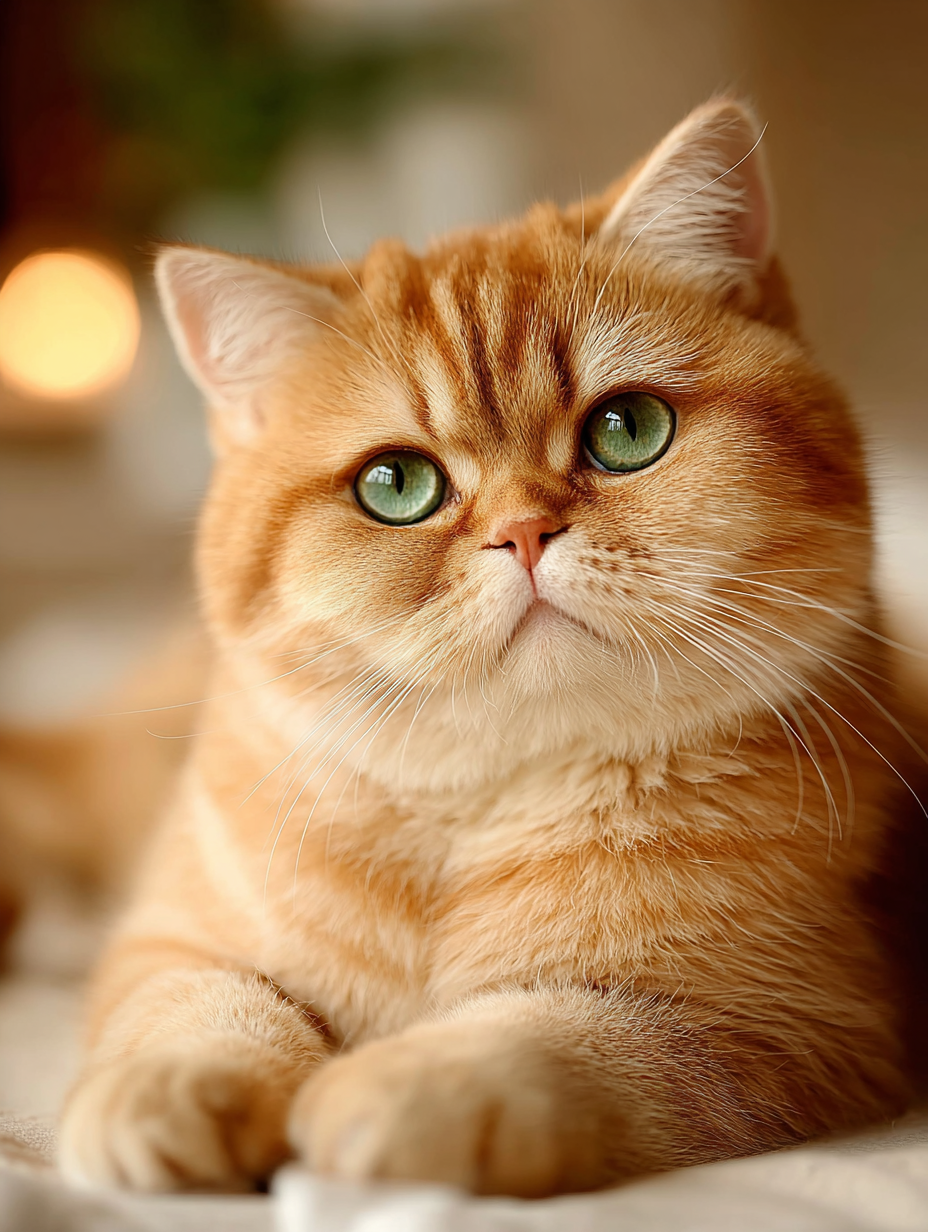
Read the Comments +